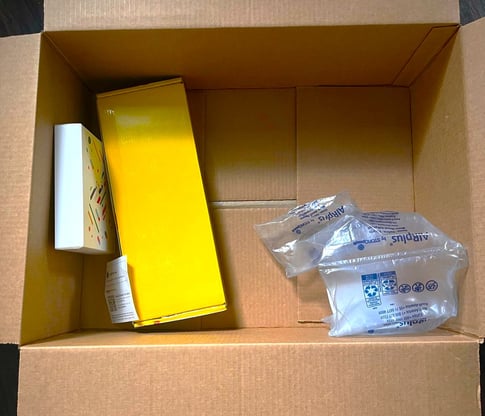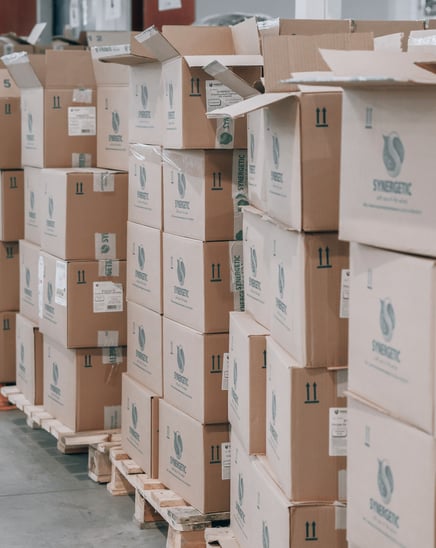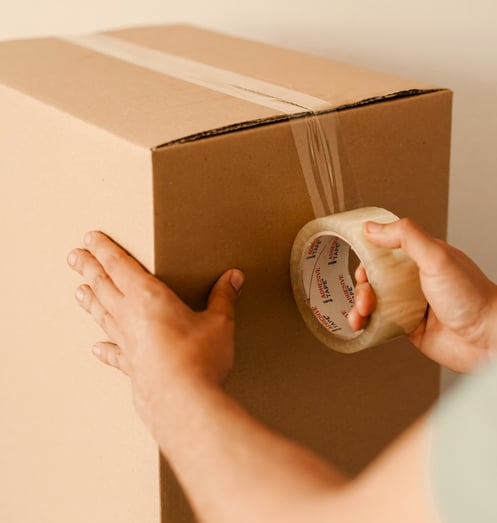When ordering online we often receive poorly packed items and a lot of void fill which takes up a lot of the unused space, yet we end up just throwing it out. This isn’t only a sustainability concern but also a price concern, which makes up a significant amount of avoidable cost and that is not acceptable because the customers and shippers pay for it.

How to avoid void fill
The purpose of void fillers for packaging is to fill the empty space between items in boxes to ensure the items do not move inside the box and get damaged. The more void fill occupies a box, the bigger the unutilized space.
There are many types of void fillers used in packaging and each one of them has a different characteristic and purpose: 1
- Air pillows
- Bubble wrap
- Foam peanuts
- Paper
- Cardboard
- Block and brace
- Wrapping
- More boxes
Block and brace are used when you need to wedge in an item to stop it from moving around. Foam peanuts or air pillows are a loose fill type of void fill that you use to fill the unutilized space completely.
Of course, void fills are not always bad as they can protect fragile items, but the problem is with avoidable and unnecessary amounts of void fills. Void fillers can easily be reduced through a few warehouse workflow process optimizations.
Cartonization
One of the challenges in the warehousing workflow is to choose the ideal box type to pack a certain order consisting of multiple items of varying sizes. This process is called ‘Cartonization’. Through better cartonization and cartonization software, businesses can boost profitability by lowering void fills used, increasing fill-rates, enhancing operational effectiveness, and increasing customer happiness through more sustainable shipments with less air and less void fill.
This is especially the case for the e-commerce sector, as these often ship out large volumes on a daily basis and possess a wide assortment of products.
Box assortment optimizationOptimizing your box assortment brings significant business impact overall as well as a decrease in void fill usage. Box assortment optimization is the evaluation of the most used box types to decrease your current box assortment in warehouse processes. This way you can be sure that your business is buying box types that fit your order profile. Packing products in unnecessarily big boxes filled with void fill results in more transported air and inefficiency.
Research shows that cardboard cost is heavily related to box assortment decisions. Cardboard buyers in the company have the incentive to decrease the number of box types (higher demand per box type), which leads them to higher volume discounts, and a cheaper overall cardboard spend.
Having a suitable box assortment to your order profile with cartonization software can ensure that each order is packed in the most optimal box and requires no void fill or the least possible amount of it.

Dimensioning system
Dimensioning is at the core of knowing the exact measurements and weight of SKUs (Stock Keeping Units) in your warehouse to optimize the packing of the goods into boxes.
Knowing the dimensions of the various-sized items in a box can significantly simplify the calculation of the amount of void fill needed and what type of void fill is needed (based on the item characteristics – size, fragility, and utilized space). Automated dimensioning can come in handy with its integrated DIM weight calculations allowing you to instantly see the amount of space not utilized and fill it with the preferably least amount of void fill.

Conclusions
Avoiding void fillers in warehouse workflow increases fill rates, ensures not only the items from not moving around but also the box's structural integrity, brings your business towards sustainability goals, and saves money for the shipper and the customer.
However, necessary measures and solutions must be implemented to achieve this kind of level of efficiency, such as cartonization software, dimensioning systems, and box assortment optimization.
Sources:
[1] White, R. (2020). What types of void fill are there? completepackaging.co.uk. From: https://www.completepackaging.co.uk/articles/types-of-void-fill


